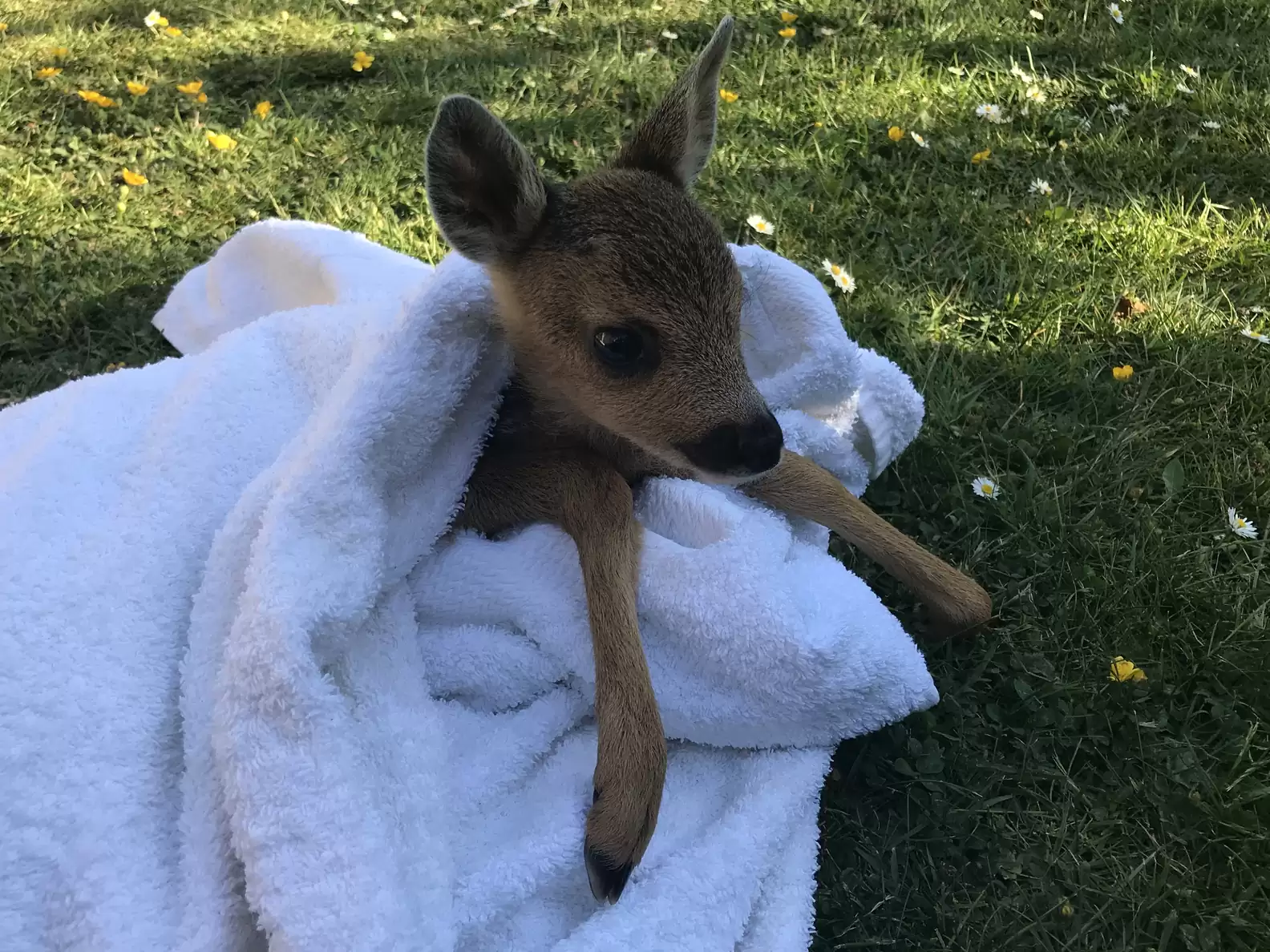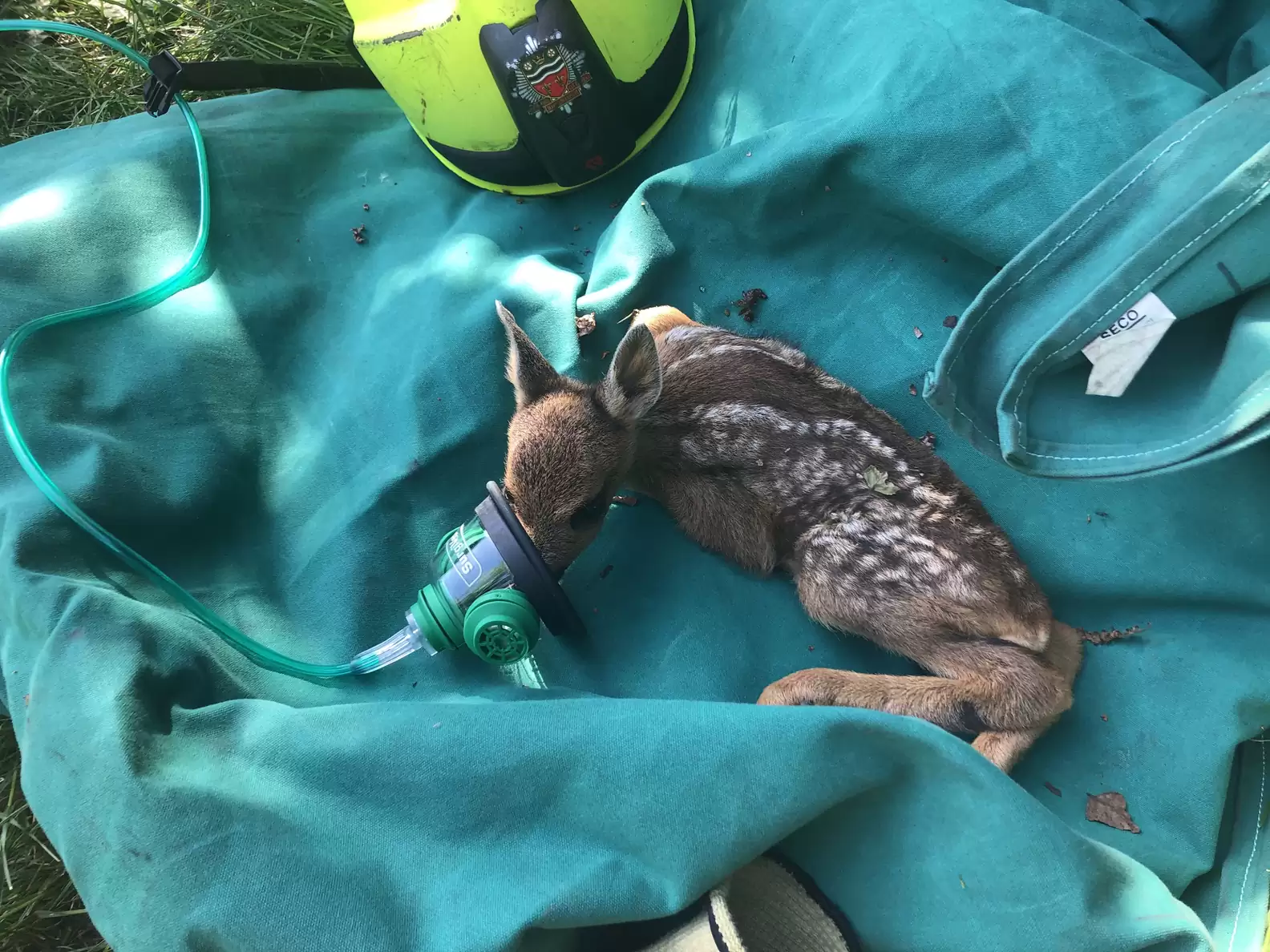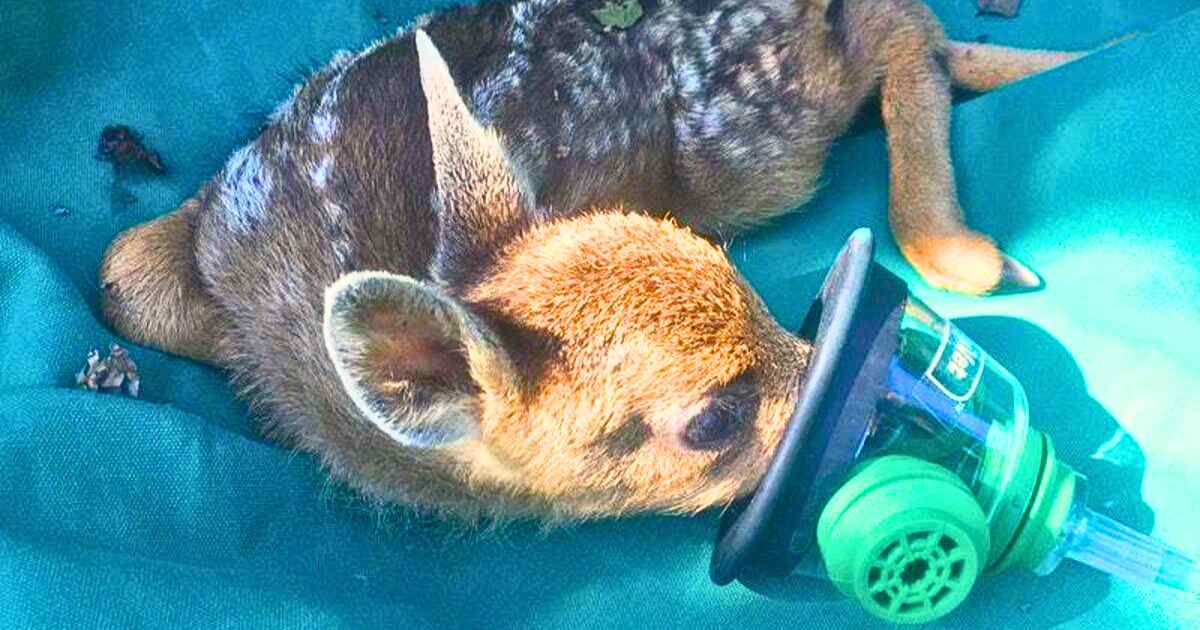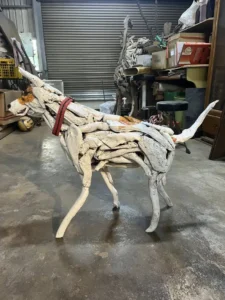When tragedy struck the Hatfield Moors near Doncaster, England, a team of firefighters found themselves not just battling flames — but fighting to save a life. In the chaos of a spreading wildfire, a group of exhausted responders stumbled upon a small, motionless figure among the charred shrubs: a baby deer, barely clinging to life. What followed became one of the most heartwarming rescue stories of the year.
A Fire That Brought Heroes Together
The fire in Hatfield Moors raged fiercely, forcing three fire stations to work side by side. Their mission was to contain the flames before they consumed more of England’s protected wetlands — home to countless species of wildlife. Amid the smoke and noise, firefighters from Epworth, Crowle, and Thorne worked tirelessly under punishing heat and exhaustion.
But amidst the destruction, something unexpected appeared: a fragile symbol of innocence.
Curled up in the soot-covered grass was a fawn — small enough to fit in a pair of hands, trembling, eyes half-closed from smoke inhalation. She was alone, scared, and barely breathing.
Without hesitation, the crew rushed her to safety, placing her gently away from the blaze. Within seconds, though, her tiny chest stopped moving.

Seconds Between Life and Death
The firefighters didn’t hesitate. They had trained for human rescues — but saving an animal this small required something special. One of the crew members grabbed a kit that had been sitting unused in their truck since 2017: a set of animal oxygen masks donated by Smokey Paws Charity.
“We introduced animal oxygen masks in 2017,” explained Ros Barbour, communications supervisor at Humberside Fire and Rescue Service. “This was the first time our crews have used one on a deer.”
The team carefully placed the smallest mask over the fawn’s nose. It was designed for pets like cats and dogs, but the fit was close enough. For a moment, there was silence — then a weak gasp. The little deer took a breath. Then another.
Everyone froze, watching hope return one exhale at a time.
Also Read: Man Loses 360 Pounds Naturally — Internet Rallies to Support His Next Step
The First Breath of Safety
After a few tense minutes, the fawn’s breathing steadied. Her eyes fluttered open, wide and calm, as if she somehow understood that she was safe. “The deer was very receptive to the mask and didn’t appear to be confused,” Barbour said.
For many of the firefighters, it was the first time they’d seen the animal oxygen masks in action — and the sight of the baby deer reviving in front of them was nothing short of miraculous.
As soon as the fawn stabilized, they contacted the RSPCA for assistance. Inspector Daniel Bradshaw arrived soon after, praising the crew for their compassion and quick thinking.
“The fire was huge, and the crews did an incredible job getting this terrified little kid to safety,” Bradshaw said. “I’m certain they brought her back to life. Without their quick actions, she may not have survived.”

A Journey Toward Recovery
Bradshaw transported the fawn to a local wildlife specialist for emergency overnight care. Later, she was moved to the RSPCA’s Stapeley Grange Wildlife Centre — a sanctuary dedicated to rehabilitating orphaned and injured animals.
There, experts ensured the fawn received medical treatment, warmth, and proper nutrition. Once strong enough, she will be released back into the wild — her rightful home.
It’s a long process, but one the RSPCA has perfected over decades of rescue work. Each year, thousands of animals like this baby deer are treated and returned to nature, thanks to partnerships between first responders and conservation groups.
How the Fire Changed More Than the Land
Wildfires like the one at Hatfield Moors can devastate entire ecosystems. They destroy food sources, force animals from their homes, and leave the soil vulnerable to erosion. But they also reveal something powerful: humanity’s capacity to care even in chaos.
When those firefighters paused their battle with the flames to save a helpless creature, they reminded everyone that compassion doesn’t stop at species lines. Their small act of mercy became a bright spark of hope amid the ash.
The Unsung Heroes of Wildlife Rescue
It’s easy to think of firefighters as simply protectors of people and property. Yet, they often play a vital role in saving wildlife too. Across the UK, emergency teams now carry pet oxygen masks, heat blankets, and specialized equipment for animal rescues — from house pets to barnyard animals and wild creatures like this deer.
Such tools exist because of organizations like Smokey Paws Charity, which donates these lifesaving kits to fire departments. Since 2017, they’ve provided thousands of masks to stations nationwide, enabling responders to act quickly when animals are caught in fires.
Related Reading: Science Confirms Kelly Brook’s Perfect Body — But the Real Message Is Bigger Than Beauty
A Lesson in Empathy
In the end, this story isn’t just about one deer — it’s about the kind of world we choose to build. The firefighters didn’t have to stop. No one ordered them to carry animal oxygen masks. But they did it anyway, because compassion doesn’t require a command.
It’s instinct — the same instinct that drives a mother animal to protect her young, or a rescuer to cradle a creature that can’t thank them.
The firefighters went back to the blaze afterward, soot-streaked and tired, but with something lighter in their hearts. They hadn’t just fought a fire that day; they’d rekindled faith in simple kindness.
Why Stories Like This Matter
Stories like this connect people to the wild in a way data never can. They remind us that nature isn’t an abstract idea — it’s alive, fragile, and often depends on human decency to survive.
For the firefighters, saving one deer didn’t change the outcome of the fire. But it changed the narrative: amid destruction, there was renewal. Amid smoke, there was breath.
The Takeaway
The baby deer will grow, heal, and one day run free through the same fields that once nearly claimed her life. And maybe — just maybe — she’ll sense, in the scent of ash and grass, the touch of those who refused to let her go.
Because in the end, every act of rescue — no matter how small — keeps the wild world breathing a little longer.



